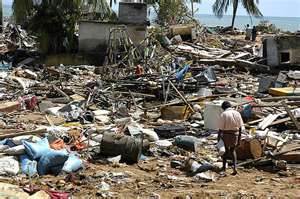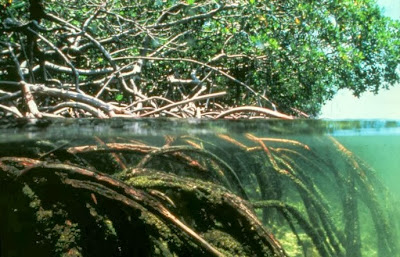Environmental degradation breeds disasters
 Environmental degradation is a significant factor that reduces the capacity of societies to deal with disaster risk in many countries around the world. This is the key message of the World Risk Report 2012, presented today in Brussels, Belgium by the German Alliance for Development Works (Alliance), United Nations University Institute for Environment and Human Security (UNU-EHS) and The Nature Conservancy.
Environmental degradation is a significant factor that reduces the capacity of societies to deal with disaster risk in many countries around the world. This is the key message of the World Risk Report 2012, presented today in Brussels, Belgium by the German Alliance for Development Works (Alliance), United Nations University Institute for Environment and Human Security (UNU-EHS) and The Nature Conservancy.The report examines the risks of and solutions for natural disasters. The record for the decade 2002 to 2011 is alarming: 4,130 disasters, more than a million deaths and an economic loss of at least 1.195 trillion dollars.
The report's WorldRiskIndex, developed by UNU-EHS in cooperation with the Alliance, determines the risk of becoming the victim of a disaster as a result of natural hazards for 173 countries. The Pacific Island states of Vanuatu and Tonga have the highest disaster risk. Malta and Qatar face the lowest risk. Australia ranks 117th and is therefore in the lowest of the risk categories.
 "This report illustrates the powerful role that nature can play in reducing risks to people and property from coastal hazards like storms, erosion and floods. Coral
"This report illustrates the powerful role that nature can play in reducing risks to people and property from coastal hazards like storms, erosion and floods. Coral reefs, oyster reefs and mangroves offer flexible, cost-effective, and sustainable first lines of defense" said Dr. Michael Beck, Lead Marine Scientist at The Nature
Conservancy.
The Conservancy's Drs. Beck and Christine Shepard, co-authors of the WRR, found that there are 200 million people who may receive risk reduction from coral reefs alone - which can reduce wave energy by more than 85 percentAustralia ranks 27th in the countries with the greatest number of at-risk people who may receive risk reduction benefits from reefs (people living below 10m elevation and within 50km of coral reefs).
The top countries are Indonesia and India (> 35 M people each); followed by the Philippines (>20M); China (> 15 M); Brazil, Vietnam and the USA (all > 7M). The report comes just before the UN's International Day for Disaster Reduction, October 13. (PRNewswire/AsiaNet)


Comments